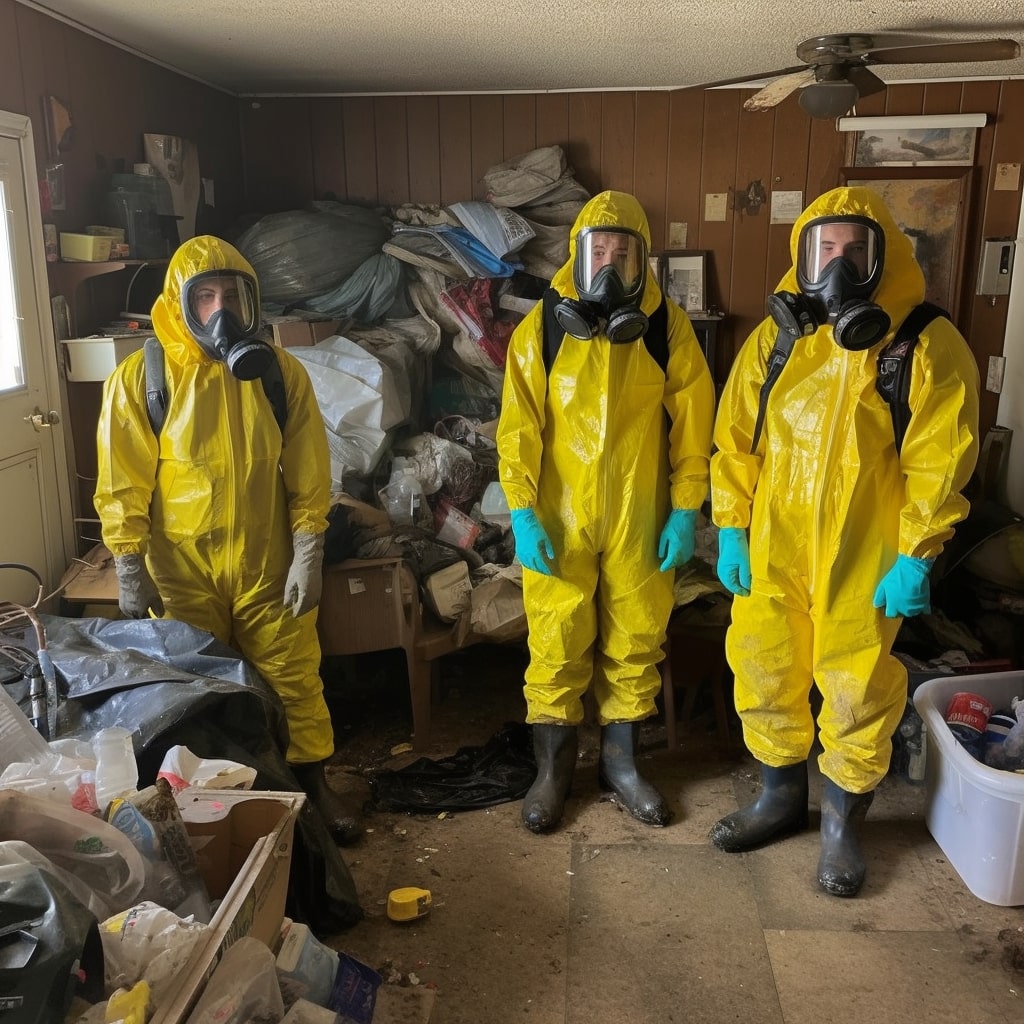Biohazard cleanup is a specialized field requiring meticulous training and equipment to mitigate significant health risks. This article examines the dangers untrained individuals face when addressing bloodborne pathogens, toxic chemicals, and infectious materials.
By dissecting the biological and psychological hazards, we underscore the critical need for professional expertise in biohazard remediation. Our focus is to inform and caution against the underestimated risks of DIY biohazard management, advocating for safety through certified protocols.
Understanding Blood Stain Removal
Blood stain removal requires meticulous attention to safety protocols to prevent exposure to potentially infectious agents.
Professional blood stain removal incorporates the utilization of chemical disinfectants and enzymatic cleaners as part of effective cleaning techniques.
Adherence to stringent safety precautions during blood cleanups ensures the minimization of health risks.
Mastery in this domain is critical for the thorough decontamination and sanitization of affected areas.
Immediate Action Steps
Following the understanding of blood stain removal protocols, the initial step in managing a biohazard situation is to secure the area to prevent further contamination and exposure.
Implement strict decontamination procedures, utilizing advanced cleaning techniques.
Employ personal protective equipment rigorously to safeguard against health hazards.
Ensure proper waste disposal methods are in place to maintain a secure environment and uphold public safety standards.
Blotting Up the Blood
One critical procedure in biohazard cleanup is the proper blotting up of blood. Without appropriate training, this task can pose significant health risks to the untrained individual. Exposure to bloodborne pathogens during inadequate blood cleanup can lead to potential infection transmission.
Key considerations include:
- Utilizing proper personal protective equipment (PPE)
- Engaging professional biohazard cleanup services
- Adhering to the importance of proper disposal methods
Cold Water Rinse Technique
Although blotting up blood is a crucial step, the cold water rinse technique is an essential follow-up in biohazard cleanup to prevent the spread of pathogens.
Employing this method, biohazard cleanup companies meticulously apply cold water to dilute and remove biological contaminants.
Safety precautions necessitate the use of personal protective equipment and professional training in cleaning techniques to ensure thorough decontamination and mitigate health risks.
Applying Potato Starch
Transitioning from the cold water rinse technique, biohazard cleanup professionals may use potato starch as an organic absorbent to effectively bind and remove residual biological materials.
- Potato starch ensures adherence to proper disposal methods by consolidating biohazardous substances.
- It mitigates health risks of improper biohazard cleanup by minimizing exposure.
- This practice underscores the importance of professional biohazard cleaning services equipped with personal protective equipment to prevent potential consequences of DIY biohazard cleanup.
Vacuuming Dried Starch
After the application of potato starch, the next critical step is the meticulous vacuuming of the dried substance to ensure complete removal of biohazardous materials. Vacuuming safety protocols must be stringently followed to maximize starch absorption and effective stain removal.
This phase is vital within professional biohazard cleanup operations, necessitating specialized equipment to prevent cross-contamination and guarantee proper disposal of hazardous residues.
Utilizing Stain Removers
The implementation of chemical stain removers in biohazard cleanup represents a critical juncture, requiring trained personnel to navigate the potential health hazards associated with their use.
Chemical alternatives may offer efficacy but pose risks without proper training.
Enzymatic cleaners provide a biologically-based solution, degrading organic matter effectively.
Natural stain removal methods reduce chemical exposure, though may lack the potency required for professional stain removal in biohazard situations.
Persistent Stain Solutions
Persistence in stain removal necessitates specialized knowledge, particularly when addressing biohazardous materials that resist conventional cleaning methods. Professional biohazard cleaners employ advanced stain removal techniques adhering to strict biohazard cleanup regulations.
DIY attempts raise significant health risks due to inadequate training. Proper training is paramount, ensuring precise application of protocols to mitigate biohazard risks while achieving thorough decontamination and restoration of affected surfaces.
Conclusion
In conclusion, the complexities involved in biohazard remediation necessitate specialized training and equipment to ensure the safe removal of hazardous materials.
Untrained individuals face significant health risks from exposure to infectious agents, toxic chemicals, and psychological trauma.
It is imperative that blood and other biohazardous substances are managed by certified professionals who adhere to strict protocols designed to mitigate these dangers, thereby safeguarding individual and public health.

